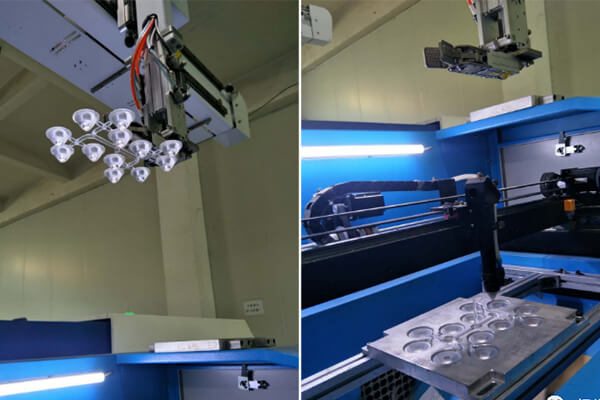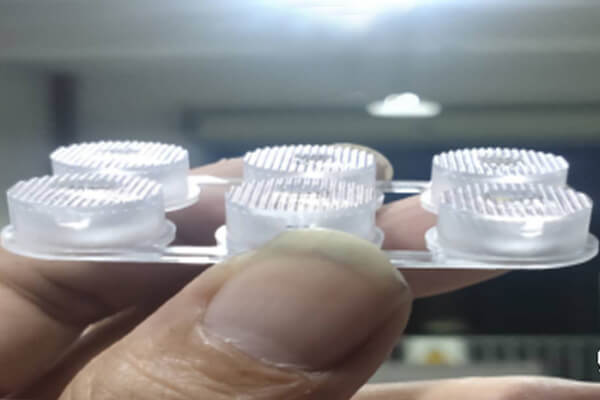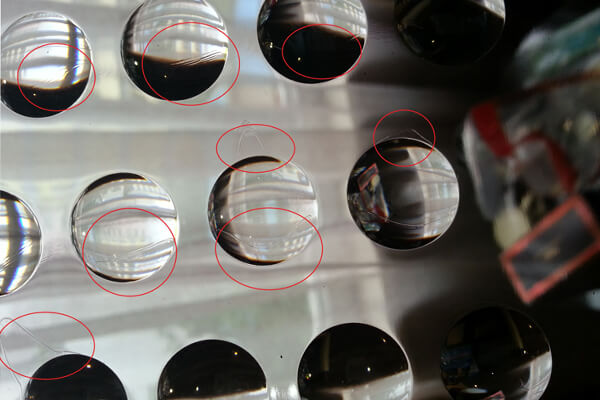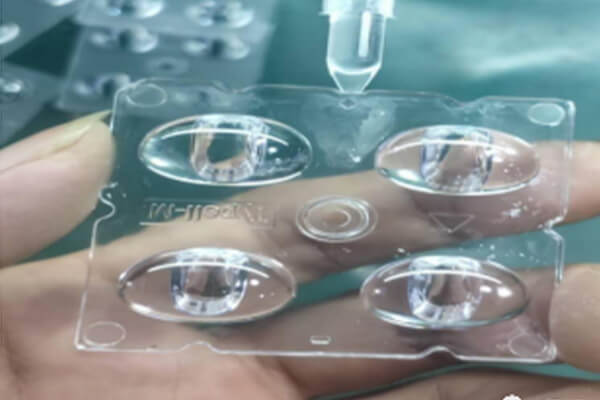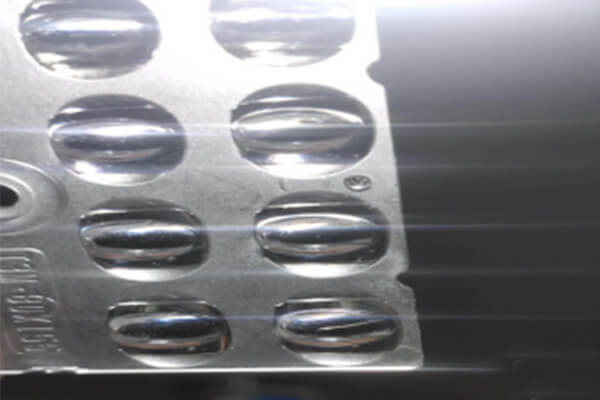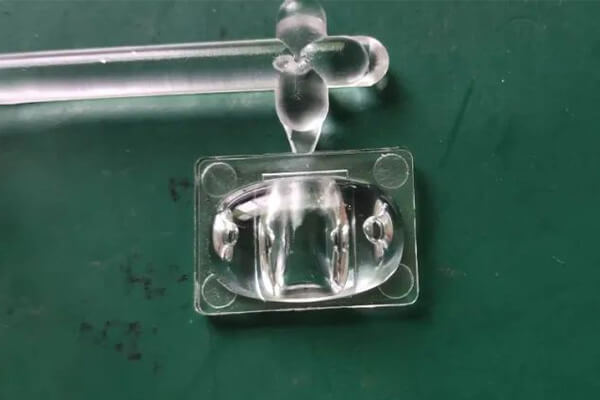Common LED Lens Injection Molding Defects And Solutions
An LED lens is an optical component designed to control the light emitted from an LED light source by redirecting or spreading it in a specific direction. They are essential in lighting systems because they help maximize the efficiency of LED lights by reducing the amount of light lost through reflection or dispersion. Additionally, LED lenses can help improve lighting quality by ensuring uniformity, reducing glare and preventing color distortion. Lens Injection molding is an important method for custom LED lenses because it can accurately replicate complex shapes and features at a relatively low cost. Various LED lens materials with different optical properties can be used to produce lens injection moldings for different applications.
LED optical devices are used more and more widely. Developed according to actual application requirements, the entire LED lens development process includes: modelling with optical design, manufacturing molding moulds, and obtaining optical lenses through injection molding. Common optical lens applications include indoor and outdoor washing Wall lights, line lights, stage lights, LED street light lenses and so on.
Select LED Lens Injection Material
The lens is an optical-grade product. In principle, we choose optical-grade raw materials, such as PMMA and optical-grade PC. Of course, there are many raw material brands on the market now, and you can choose according to your needs.
First of all, we must master the process characteristics of LED lens materials:
- 1. The fluidity of PMMA (acrylic) is worse than that of PS and ABS, and the melt viscosity is more sensitive to temperature changes. In the molding process, the melt viscosity is mainly changed from the injection temperature. Drying temperature: 80-90°C, the time is about 2-4 hours. Melt temperature: ranging from 210°C to 270°C, depending on the information provided by the supplier. The mold temperature is 70-100°C, depending on the actual situation.
- 2. PC is renowned for its exceptional performance, high transparency, excellent impact toughness, and creep resistance, and can withstand a broad range of temperatures. Its melting temperature typically ranges from 270°C to 320°C. However, if the material temperature exceeds 340°C, PC will decompose. The poor fluidity of PC is very sensitive to temperature, and the melt viscosity will decrease significantly with the increase of temperature. Properly increasing the temperature Cylinder temperature is good for PC plasticization. It is extremely sensitive to water, so it must be fully dried before injection molding to reduce its water content to less than 0.02%. The general drying conditions of PC: 100~120℃, for more than 2-4 hours. The temperature control for molds typically ranges from 85°C to 125°C, although it is generally maintained between 80°C to 125°C. In cases where the products have complex shapes, thinner profiles, and more stringent requirements, the temperature can be raised to between 100°C to 125°C. However, it is crucial to ensure that this temperature does not surpass the mold’s heat deformation temperature. High mold temperature can reduce the difference between mold temperature and PC material temperature, and can reduce the internal stress of the part.
Quality Standard of Led Lens
Since the optical lens is applied to the light source, qualified LED lens products need to meet these requirements: no bubbles, no dents, no sink marks, no flow lines, and weld marks within an acceptable range (does not affect packaging and use functions), warping deformation In the controllable range (without affecting assembly or secondary injection molding), the sun-patterned product has grain and no shiny surface (does not affect the optical effect).
Common LED Lens Injection Molding Defects and Solutions
Qualified products are obtained through injection molding of lens products, which also follow the five elements of injection molding: pressure, speed, time, temperature, and position. It’s just that optical lenses have stricter requirements than ordinary injection molding products.
The following is an analysis of the problems that are more likely to occur in the lens injection molding process.
Shrink in lens injection molding
After rigorous lens design, each lens product has its specific shape. But shrinking will affect its light shape.
The root cause of shrinkage is uneven wall thickness, and plastic condensation cannot be fed. We need to analyze what causes it. Material temperature, mold temperature is not enough? Not enough pressure? Is the cooling time enough? When the reason is found out, the parameters of the injection molding machine can be adjusted appropriately, such as increasing the holding pressure to extend the holding pressure or cooling time, and increasing the mold temperature and material temperature for better filling. If the plastic inlet of the mould is too small and the runner is too long to fill fully, it is necessary to modify the mould to solve the problem.
Therefore, for shrinkage, the solution is summarized as follows:
- a: The water inlet of the mold is small, the sprue is long, and the plastic is difficult to glue in. Increase the water inlet or improve the glue feeding method.
- B: If the material temperature is too low, increase the material temperature, such as thicker products should increase the material temperature to increase fluidity and reduce shrinkage.
- C: Increase the holding pressure and prolong the holding time due to early switch to holding pressure or insufficient holding pressure.
- D: The cooling time is not enough, increase the cooling time. For example, for thick-walled lenses with a mirror surface, proper cooling time is beneficial to improve shrinkage.
Flow lines in lens injection molding
Usually, flow lines appear in the glue inlet and wall thickness. Generally, flow lines are mostly caused by plastic melt injection, and when the melts enter the mold cavity successively, the temperature difference between the two leads to flow lines.
Flow lines in lens products, especially at the position of the light-emitting hole, will affect the light effect. At this time, we must inject in sections, find out where the flow lines appear, and reduce the injection speed slightly in advance to solve the problem. Of course, sometimes the mold temperature is too high, and the fast flow of plastic is also one of the reasons. At this time, the mold temperature can be appropriately reduced.
So the summary for flow lines is as follows:
- ①. Process reason:
A: The mold temperature is high and the material temperature is low.
B: The injection pressure is too high and the speed is too fast to cause injection. You can find the position and reduce the injection pressure and speed. - ②Mold reason: The gate is too small or the shape is wrong, resulting in jetting, and the size and shape of the gate should be trimmed (for example, fan-shaped according to the situation) to prevent jetting.
Water ripple in lens injection molding
The water ripple is easier to understand, its shape is like a wave, as shown in the figure. Usually, due to the low mold temperature, the plastic condenses in advance, and the melt enters later to promote the formation, which can properly increase the mold temperature, material temperature, and injection rate, or improve the mold water inlet.
Air marks in lens injection molding
Air marks are the appearance of aerosol on the surface of plastic products.
Airmarks on the surface of the lens affect the appearance and light effect, which can be solved from the injection mold and machine adjustment process:
- A: If the mold exhaust is not good, add exhaust. If the product allows, you can add exhaust needles or add exhaust grooves on the mold. 80% of injection molding failures are caused by injection molds. This is a once-and-for-all method, and the requirements for adjusting the machine are low.
- B: Adjusting the machine to solve the problem, relatively requires the ability to adjust the machine, control the rate of injection in sections, and switch to low-speed injection at the position where air marks are generated.
LED lens Injection molding bonding line
The bonding line of the LED lens, especially at the position of the light-emitting hole, must be improved. Otherwise, it will affect the light effect and cause water seepage in the finished package, which will affect the service life of the product.
There are two cases of injection molding bonding lines:
- One is that two or more melts cannot be well combined to form when the temperature drops at the flow end of the cavity. Improvement countermeasures are: increase material temperature, increase mold temperature, and appropriately increase firing rate.
- The other is caused by the rapid flow and convergence of the melt in the cavity due to air trapping. The improvement method is: open the exhaust on the lens mold to improve the exhaust, change the position of the glue inlet or increase the glue inlet to change the bonding position. Or it can be improved by adjusting the position and speed conversion of process parameters.
Black spots, yellowing and color mixing on the product
Black dots, yellowing and color mixing are absolutely unacceptable defects of lens products.
- A: Check whether the temperature of the material is too high, causing the material to burn black and carbonize in the barrel, check whether there is a gap in the nozzle flange, and whether there is accumulated material carbonization inside.
- B: Color mixing checks whether the gun barrel is cleaned when changing the material and changing the color, and whether there is any miscellaneous material in the material.
Shiny grain surface or no pattern
Some lenses need to be patterned on the lens surface or a certain part to obtain the corresponding optical effect, but the injection molded LED lens is shiny or has no pattern. At this time, we need to analyze the reason:
- a: Check whether there is any grain loss on the part of the mold where the grain is exposed.
- b: Is the product filled with injection molding?
- c: Is the injection molding cooling cycle enough?
So the improvement method is: under the premise that the mold is in good condition, appropriately increase the amount of glue, increase the holding pressure, and allow enough cooling time.
Size difference and warpage in lens injection molding
Product design is designed for use from the beginning, with its fixed size. Size difference? The main factors affecting the size of injection molded products are the processing size of the mold and the parameters of the injection molding process. Generally speaking, a qualified lens mold design should take into account the errors caused by mold manufacturing errors and unbalanced shrinkage of molded parts in advance. Warping deformation is common in long square lens products, such as modular lenses such as street lamps.
In terms of molds, the main factors that affect the deformation of plastic parts are filling, cooling and ejection. The position, quantity, form of the mold gate, single gate or multiple gates will affect the flow of the melt in the mold cavity, and the magnitude and orientation of internal stress. Due to uneven mold temperature, uneven cooling and shrinkage of the product, unbalanced ejection, and uneven force on the product will also cause warping and deformation.
When it comes to the injection molding process, warpage can occur if the injection pressure is excessive, the holding time is too long, the melt temperature is too low, and the speed is too fast, leading to increased internal stress. Overheating and deformation during demoulding can occur if the mold temperature is too high and the cooling time is too short. To limit the generation of internal stress, the screw speed and back pressure can be reduced, while maintaining the minimum filling amount by reducing the melt density.
To sum up, the directions to solve the size difference and warping deformation are:
- A: The size is large (small), reduce (increase) the holding pressure, and increase (decrease) the mold temperature. Extend the holding pressure cooling time to maintain dimensional stability.
- B: Reasonable gate, ejection design can reduce deformation.
- C: Increase the water delivery of the mold to make the mold temperature uniform and the product to cool evenly to reduce deformation.
- D: Reasonable holding pressure, time, and cooling time can reduce deformation.
- E: When adjusting the machine, reduce the mold temperature, reduce the injection pressure, melt speed and back pressure, and do not make the product full to death.
- F: Using dual mold temperatures, since the warpage is caused by uneven mold temperature and uneven cooling, you can use the two mold temperature controllers to control the front and rear mold temperatures separately, forming a temperature difference between the front and back, so as to achieve the purpose of controlling warpage and deformation. It is also a way.
- G: If necessary, the product can be annealed after being fixed with a jig or demolded.
Air bubbles and vacuum bubbles in lens injection molding
First of all, it is necessary to analyze whether it is a general bubble or a vacuum bubble. As the name implies, the vacuum bubble is vacuum without air, which is usually formed by uneven cooling shrinkage due to uneven thickness of the product (shrinkage pit). The bubbles are generally located at the end of the product melt joint because the gas cannot be discharged. There are often multiple bubbles, while vacuum bubbles exist in a single form. Therefore, most of the thick-walled parts in lens products are vacuum bubbles. Of course, sometimes there may be air bubbles at the end of the molten plastic flow at the middle thick-walled position, which needs to be analyzed clearly.
To improve air bubbles and vacuum bubbles, you can try the following solutions:
- A: Improve the mold. The gate of the mold is too small, the position arrangement is unreasonable, the runner is too small, the water transportation is unreasonable, and the uneven cooling is easy to generate air bubbles.
- B: If the air bubbles are caused by poor mold exhaust and trapped air, the mold exhaust can be improved by adding exhaust needles or exhaust grooves. In terms of process, the raw materials are fully dried, the melt temperature is lowered to prevent gas from thermal degradation due to excessive material temperature, proper back pressure reduces thermal degradation, segmental injection, and injection pressure and speed are reduced to allow gas to escape. It can also reduce the clamping force appropriately, which can obviously improve the bubbles formed by trapped air, but it is also easy to cause other problems such as burrs.
- C: If it is a vacuum bubble caused by uneven cooling and shrinkage of the thick book, you can properly increase the mold temperature, increase the back pressure, increase the holding pressure and cooling time to make it fuller and solve the vacuum shrinkage.
Processing and packaging of LED lens products
With the rapid development of science and technology, the competition in the manufacturing industry is fierce. How to manufacture products with lower cost and higher efficiency, it is inevitable for mechanical automation to reduce or even replace labor. The same is true for injection molding. With the application of automation equipment such as manipulators, labor is effectively reduced and production efficiency is improved. Lens products require a fairly clean and dust-free environment, with the application of manipulators, laser cutting machines, and automated packaging.
For parts that require labor, employees must wear finger gloves to prevent fingerprints on the surface of the lens, and use PE bags or protective films for packaging, which are tightly dustproof and waterproof.
Summarize
Sink marks, warpage, flash, and voids can occur due to variations in material flow, cooling rates, mold design, and processing parameters. Gas traps and burn marks may arise from inadequate venting, excessive melt temperature, or overpacking. Contamination and short shots are often due to insufficient or degraded material, while weld lines may result from multiple gate locations or intersecting flow fronts.
Led injection molding defects can compromise the quality and consistency of LED lenses, resulting in decreased light transmission, reduced optical clarity, and impaired performance. By addressing defects through process optimization, LED lens design, and material selection, LED lens manufacturers can ensure that their LED lenses meet or exceed industry standards for reliability, efficiency, and longevity.
Plastic Injection molding remains a versatile and cost-effective manufacturing process for producing high-quality LED lenses. However, it requires careful attention to detail and expertise in material science, mold design, and processing technology to achieve optimal results. By leveraging advanced optical detection tools, in-process monitoring, and continuous improvement methodologies, LED lens manufacturers can minimize defects, optimize performance, and enhance the value of their LED products.
About Sungplastic
Sungplastic is a plastic product manufacturer with rich experience in injection molding. According to the different product development requirements, we flexibly adjust the manufacturing process to achieve high quality, high efficiency and more economical.
We offer a variety of manufacturing services: Rapid Prototyping, Tool Making, Injection Molding, Product Design and Development, CNC Machining and Metal Stamping. You can choose from a variety of plastics, silicone rubber, or metal for your product. Regardless of mass production or small batch customization, Sungplastic has always been committed to providing assured, efficient and more economical one-stop processing services for your projects.
Contact us for a free quote and project review.
Get a free quote and design analysis today.
We’ll reply to you within 6 working hours.
We respect your privacy.
+86 139 2927 4777 (WhatsApp, Wechat)

